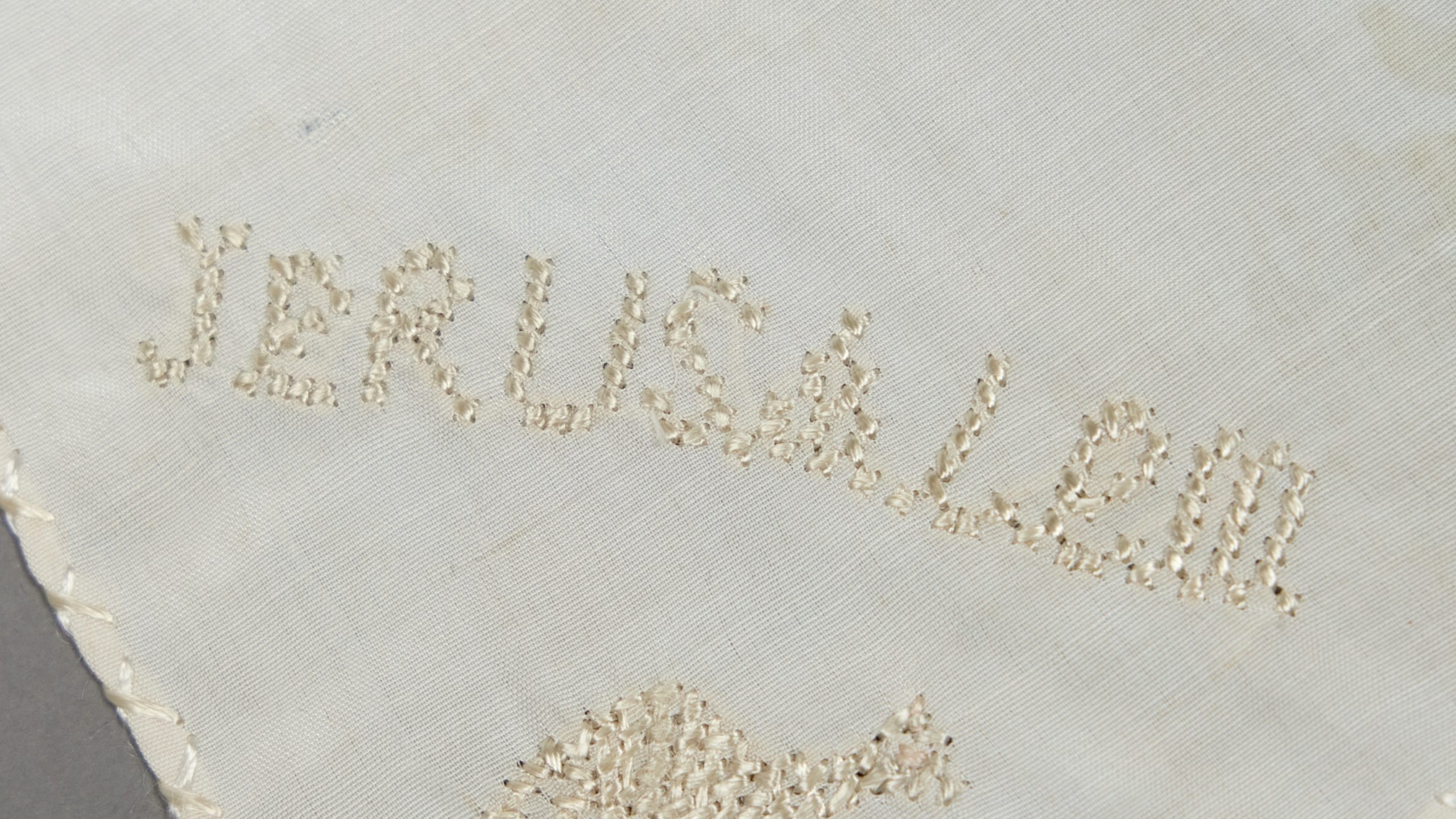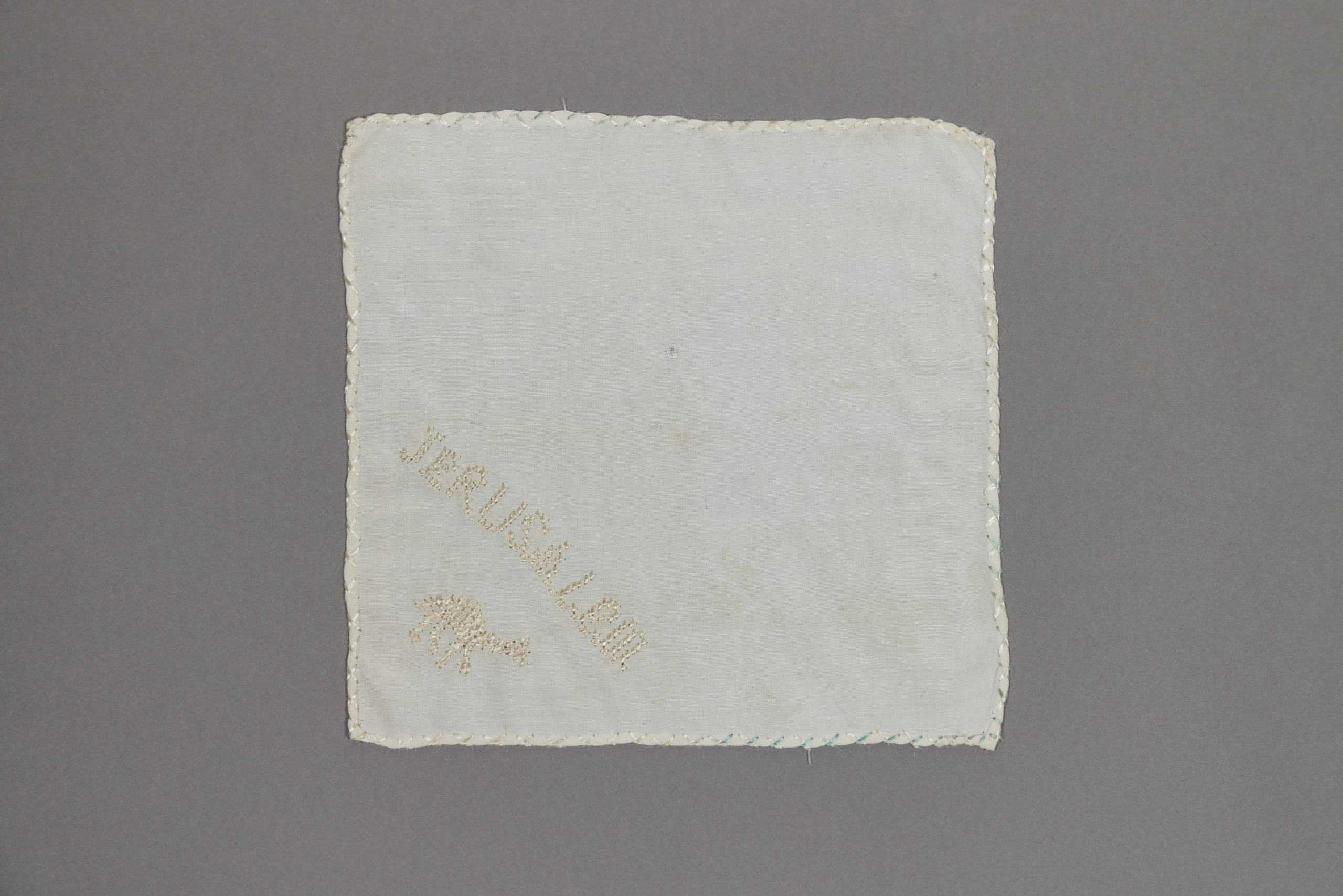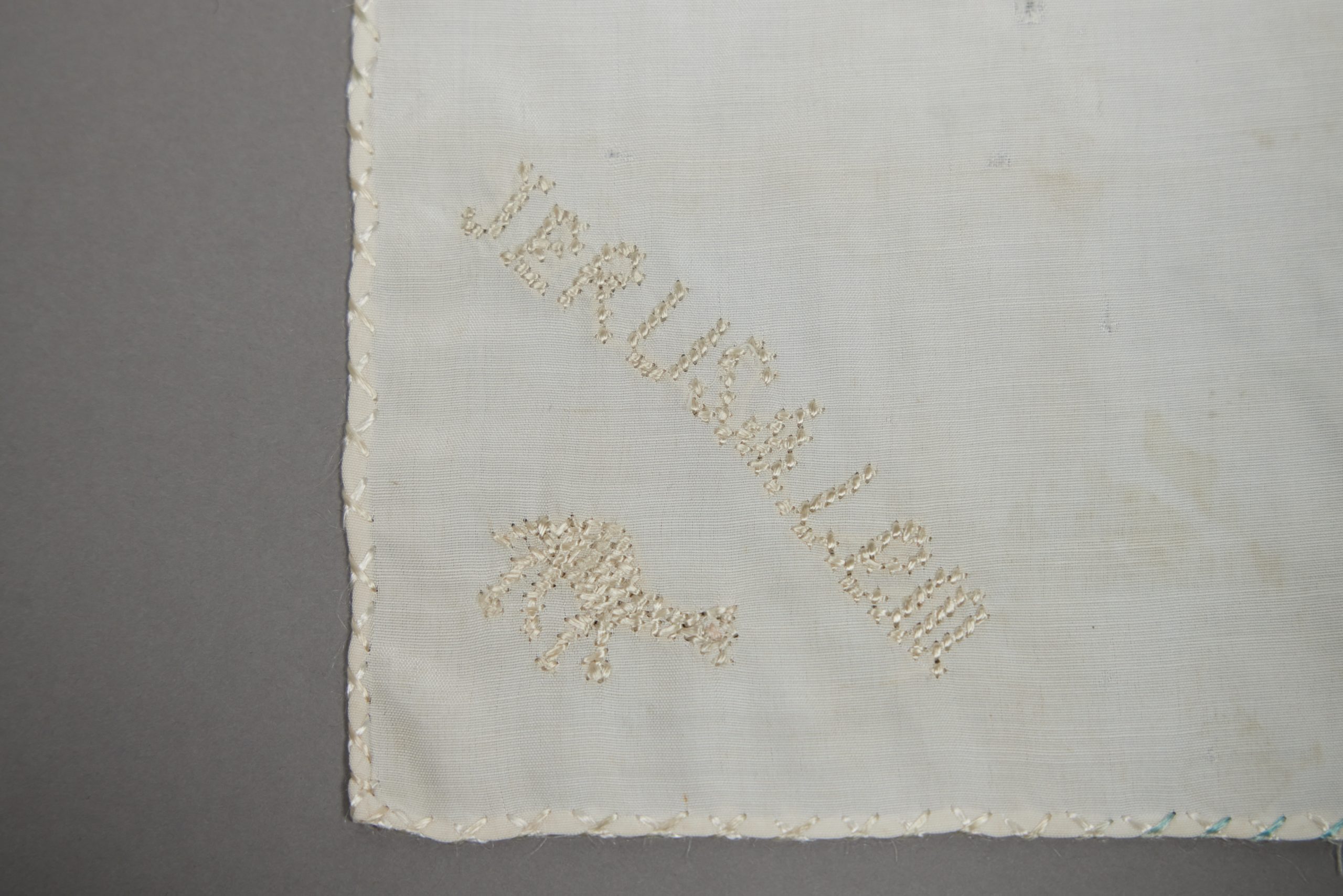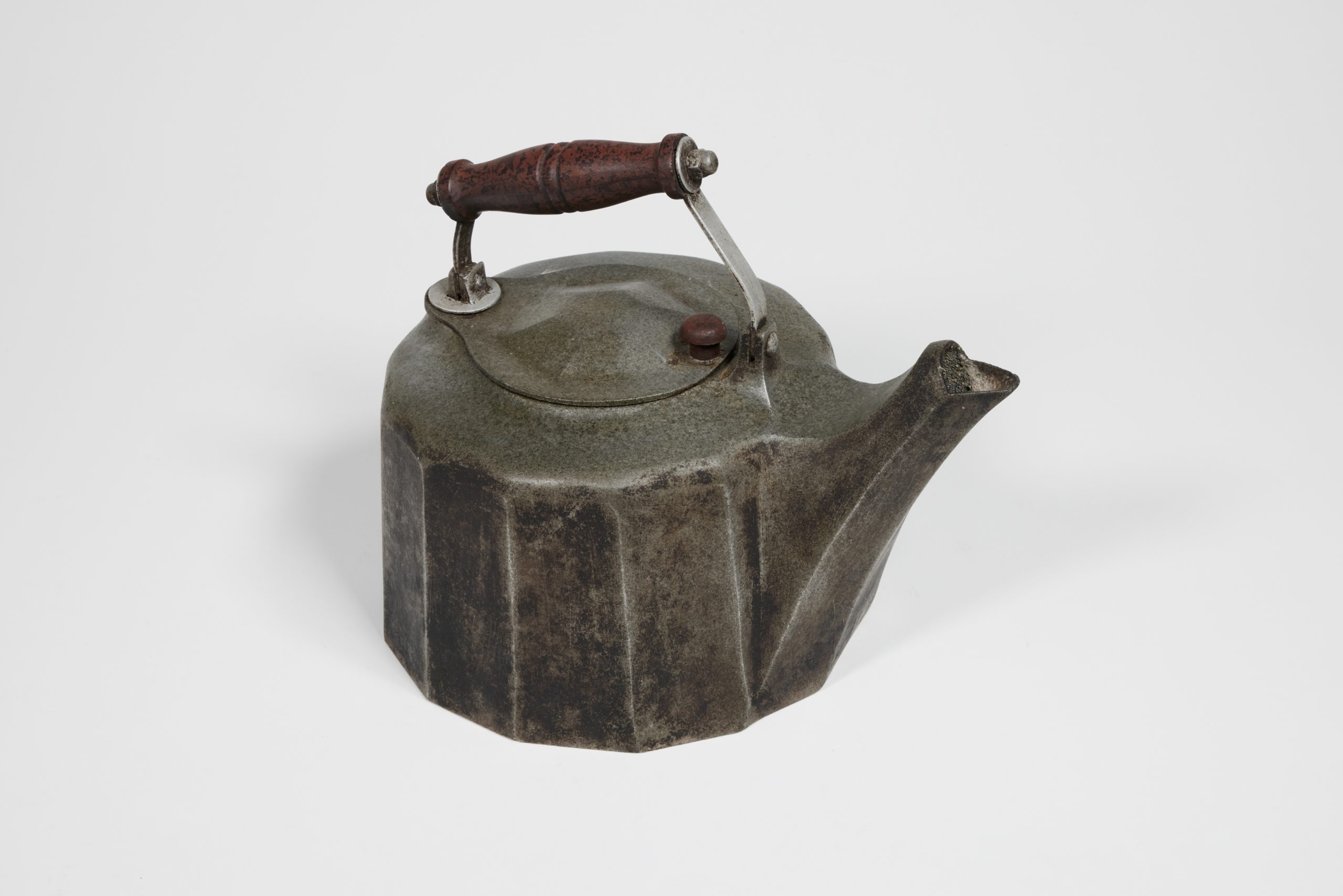Through the Eye of Ella’s Needle
What’s Behind This Humble Handkerchief?
Around 120 years ago, this small handkerchief was hemmed and embroidered by a young girl from Ulladulla on the NSW south coast – Ella Mellshimer (1886-1979). Its decorative marks are simple and include the word ‘Jerusalem’, along with a single-humped camel. These symbols reflect that Ella was raised according to the Christian faith, which she remained devoted to throughout her long life.
To Christians, Jerusalem is a Holy City because of its association with the life of Jesus. As the Christian tradition teaches, Jesus was taken to Jerusalem soon after his birth, returned several times during his life, and his crucifixion took place not far from the city.
At the heart of the Christian story about the birth of Jesus is the camel. The three wise men who journeyed to Bethlehem to see the baby Jesus each rode a camel. Did Ella reverently reflected on the baby Jesus, and the wise men, as she pierced the cloth with her embroidery needle to make each small length of running stitch, used to outline and fill-in the figure of her camel?
Or, perhaps Ella was reflecting on the well-known story about a camel (and a needle) that Jesus is said to have spoken – it is easier for a camel to pass through the eye of a needle than for a rich man to enter the gates of heaven. And if she was, did she quiz over the impossibility of a camel fitting through the end of a needle rather than the moral lesson this parable teaches.
What we do know with some certainty is that the handkerchief itself has a long history in the western world, and it dates from at least 100 years before the birth of Jesus. Among other purposes, it has been used to wipe brows, tears, mouths, whole faces, and of course noses. Though, it has only been decorated and used for ornament or show for about 400 years.
So, as Ella wet the end of her embroidery floss with her lips – to thread her needle – and began marking this small square of cloth with these well-known Christian symbols, she was drawing together several traditions many European settler families like hers followed.







